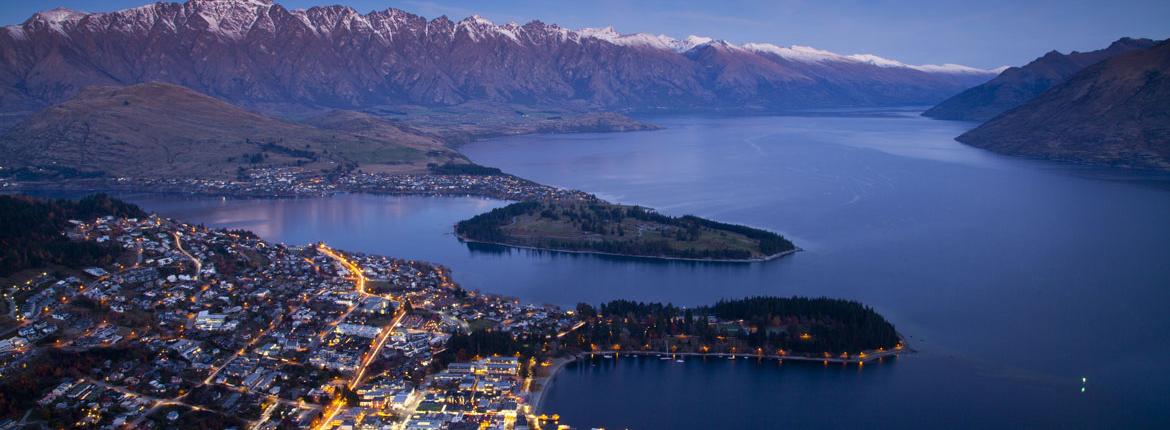Record immigration. Relentless population growth. Traffic snarl-ups. Soaring house prices. It sounds like another rant about life in Auckland, but it’s not.
More and more, Queenstown too is feeling the pressure of growth, and many readers may be surprised to find that, in recent decades, the jewel in our tourism crown has been the fastest-growing part of the country. Since 1991, the population of the Queenstown Lakes district has tripled to 35,000 (in comparison, Auckland’s population has increased by about 60% in the same period).
The bulk of the growth has come from immigration as people from other parts of New Zealand and abroad choose to live the Queenstown dream. To absorb the new arrivals, entire new suburbs have sprung up in places like Lake Hayes Estate, Shotover Country and Jack’s Point. New retail and commercial development around the airport is on a scale you’d expect to see in centres five or ten times Queenstown’s size.
Of course, growth pressure has also come from visitors. Over the past decade, air passenger arrivals have tripled, with the number of international visitors increasing by a whopping 26% each year. On any day of the year, tourists will typically boost the population by close to 15,000 people. But at key moments – the Winter Festival, for instance – visitor numbers swell, pushing the population up well over the 100,000 mark. At these points, Queenstown becomes the second-largest centre in the South Island. What has it meant for the Queenstown transport network?
Over the past three years, traffic on Queenstown’s main roads increased by 45% – yes, 45% – reducing traffic to a crawl at peak hour, and throughout the day during the tourism high season. Put simply, Queenstown is a city that’s trying to survive on town-sized infrastructure. The system has had to absorb more and more demand without the necessary investment in new capacity, and many people worry about what it could do to Queenstown’s appeal as a place to visit and to live.
Chairman of the AA’s Otago District Council, Alan Race, says that in the past Queenstown has been let down by transport planning.
“Queenstown has been promoted everywhere as an iconic tourist destination, but local and central government have never backed that up with a proper transport strategy. Clogged roads and swamped services make for a second-rate tourist experience – meaning a lot of tourists won’t come back – and make life a misery for the people who actually live there.”
The good news, however, is that things are changing. The NZ Transport Agency (NZTA), in collaboration with the Queenstown Lakes District Council and the Otago Regional Council, is leading the development of an Integrated Transport Programme, bringing together the numerous pre-existing transport plans and processes. Over the next decade, it could lead to $1 billion of investment in the road network, public transport services, and initiatives aimed at changing when, where and how people get around. Queenstown Lakes Mayor, Jim Boult, is optimistic about the new direction.
“The multi-agency approach is providing a great opportunity to start looking at solutions to our transport challenges in a more collaborative and forward-thinking way. This is essential if we’re to develop a truly resilient transport network.”
Here are five things to watch out for as the transport programme takes shape:
1. New roads
Work is well under way around the airport – a key bottleneck – including a new bypass and a new bridge at Kawarau Falls (an upgrade to the infamous BP roundabout has already had a massive impact). Options for a new arterial route alongside the town centre are now being considered, and other new arterials to service growth areas, as well as new bridges across the Kawarau and Shotover Rivers, shouldn’t be ruled out as growth continues.
2. Pedestrianised town centre
A new town centre arterial will make it possible to create new pedestrian-friendly streets and laneways. The focal point could be an extended pedestrian-only zone from the lake right up to a new council office and community space on Stanley Street.
3. Technology
NZTA has recently launched a smartphone app that combines transport options – car, bus, carpooling, taxi and helicopter – into a single marketplace, allowing users to choose between options based on factors like cost and travel time. Dynamic lane controls, where a system of gantries and road lighting is used to create an additional lane in the direction of main traffic flow in peak hours, could become part of the mix on SH6A.
4. Public transport
Queenstown will soon see the introduction of new bus routes and a $2 flat fee across the network. Further ahead, a new bus interchange is envisaged close to the town centre, possibly supported by transit lanes. Utilising a 'highway' that’s currently free of traffic, water taxis are an exciting option to connect the town centre and the airport.
5. Parking
Queenstown Lakes District Council is looking to change its approach to parking, in terms of the cost and location of parking spaces, and the number provided. Plans include new parking buildings within walking distance of the town centre, and park and ride facilities on the edge of town, dovetailing with the public transport system. See aadirections.co.nz for more motoring-related stories.
Reported by Barney Irvine for our AA Directions Summer 2017 issue




